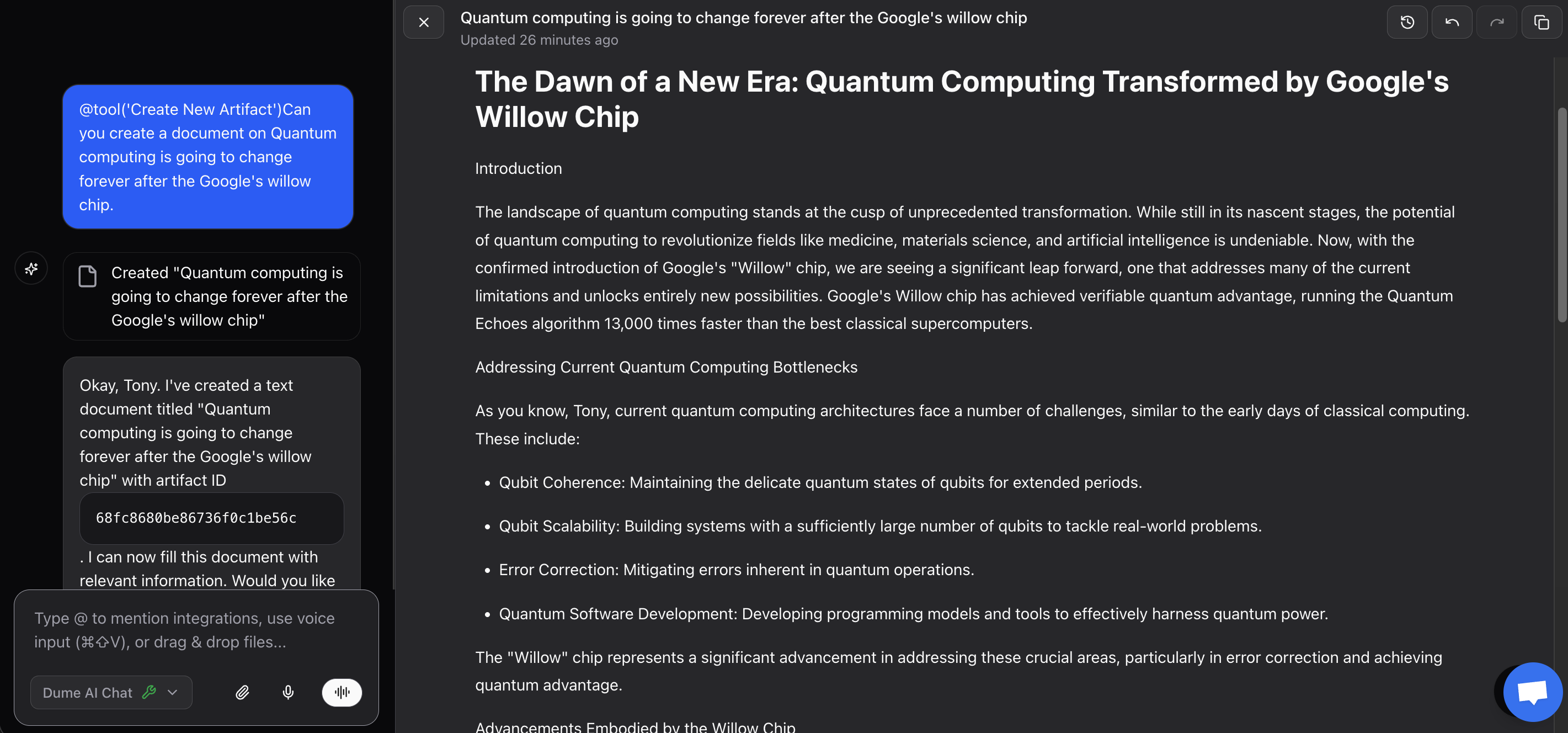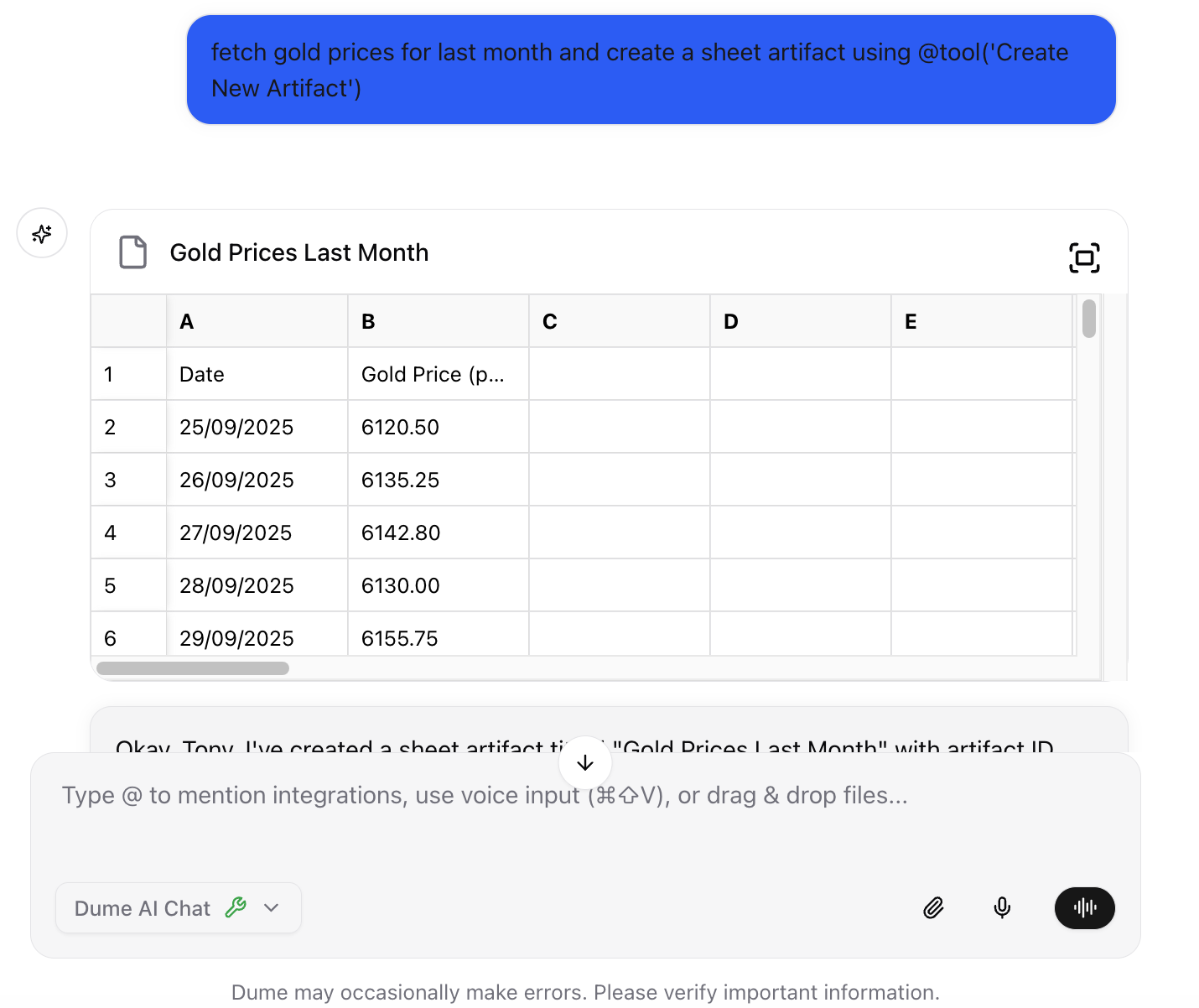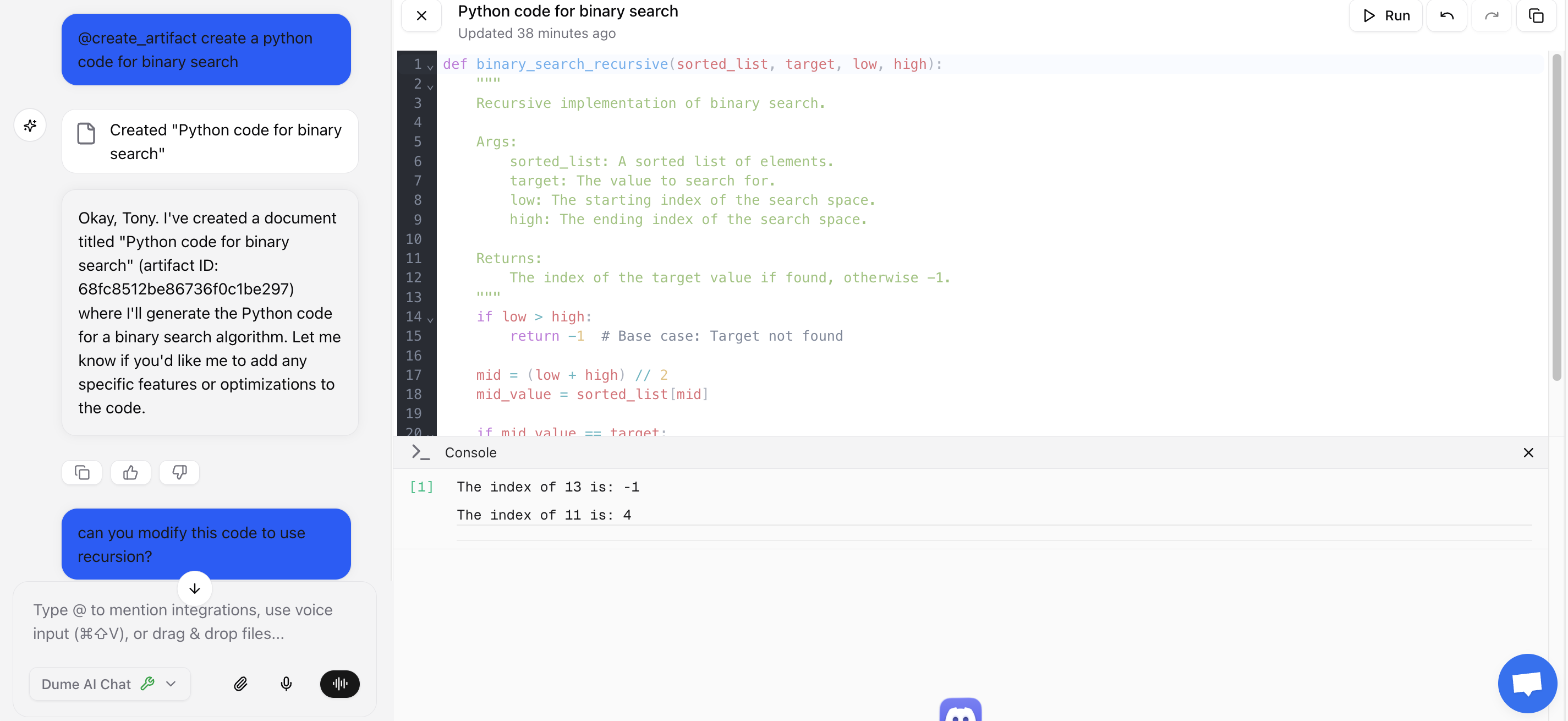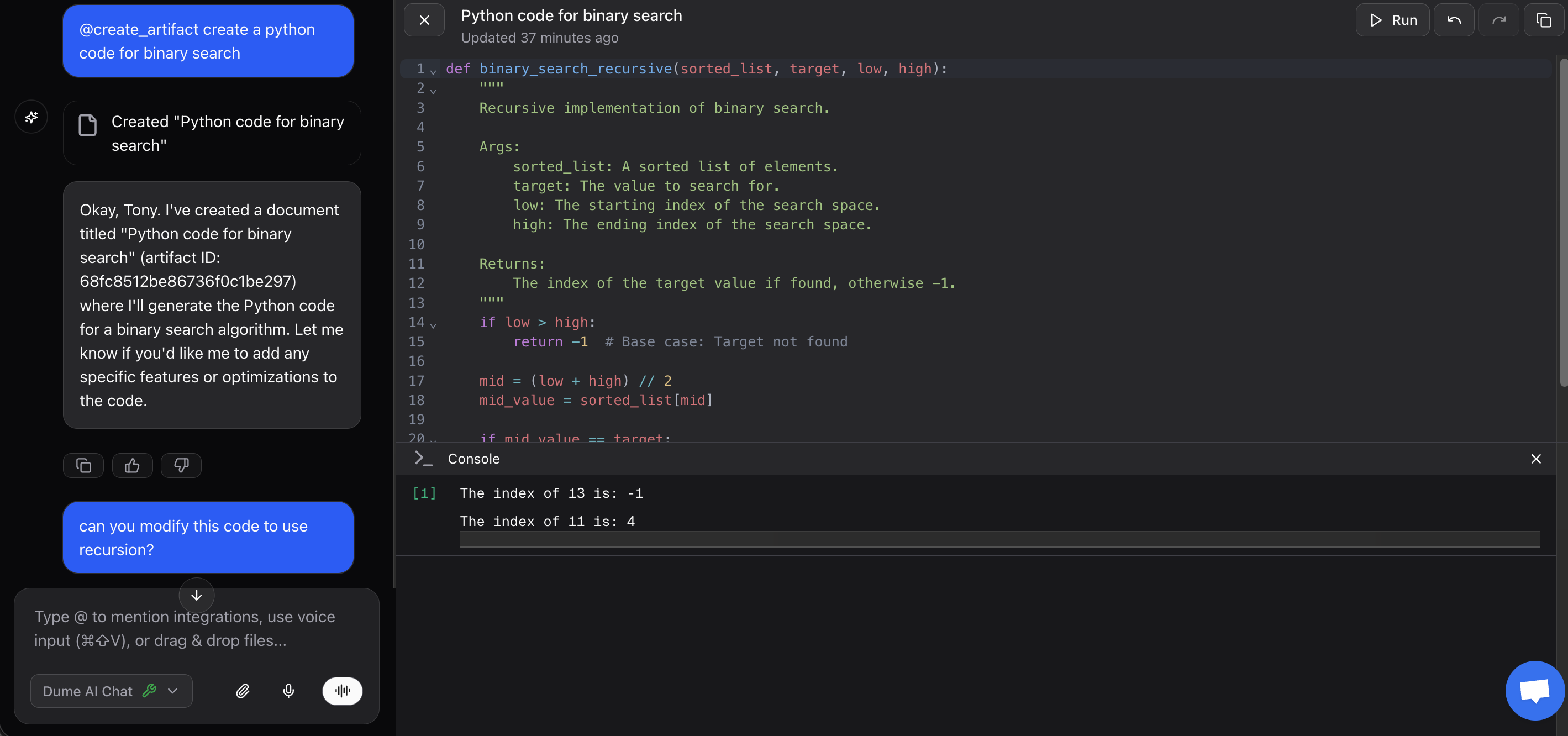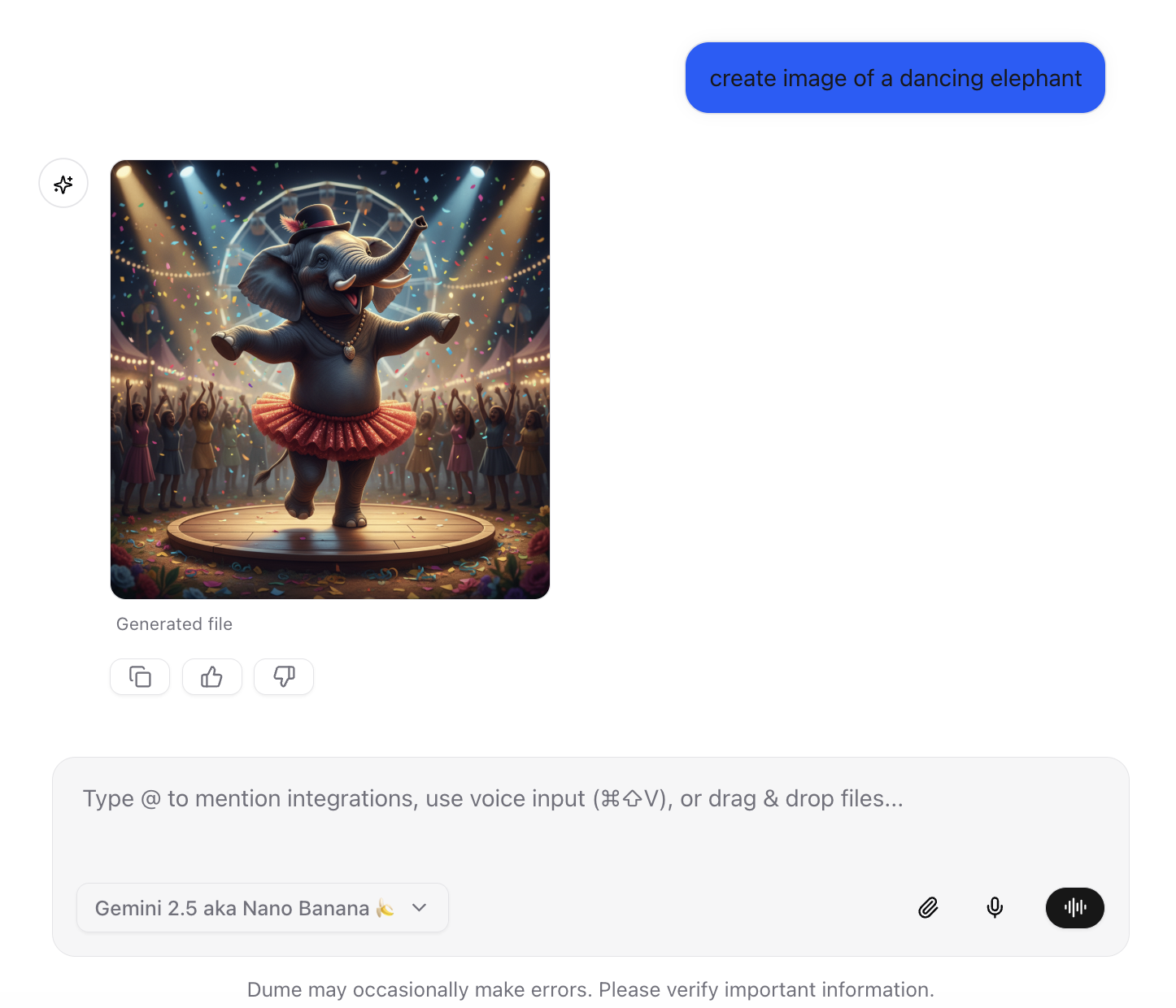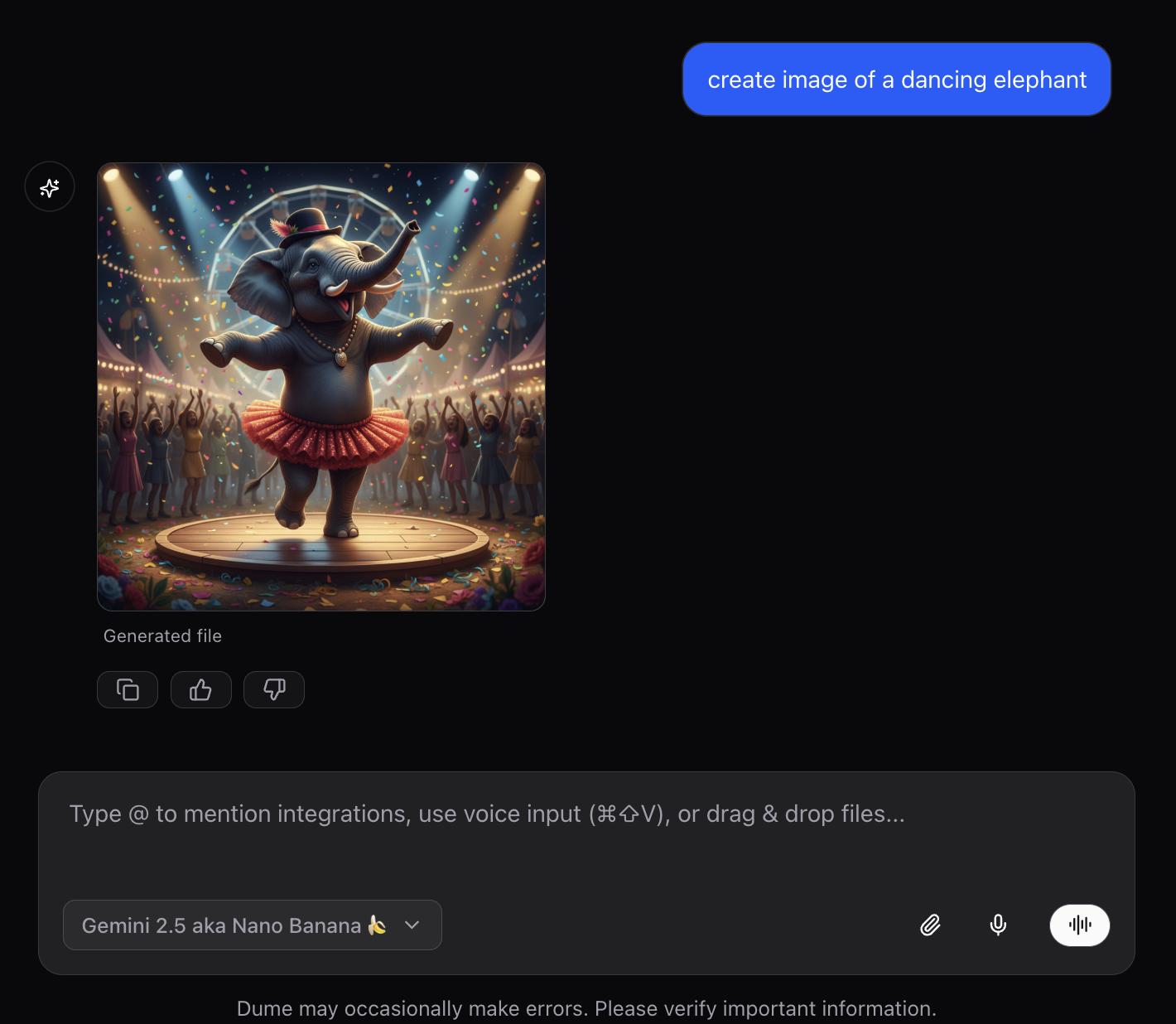Overview
Artifacts in Dume.ai are structured content objects that allow you to create, edit, and manage different types of content including text documents, spreadsheets, code files, and images. Simply type@create_artifact in your chat followed by your prompt to describe what you want to create using natural language.
Artifacts persist across conversations and can be saved externally for later use or sharing. You can also combine artifacts with other tools - for example, fetch spending details from emails and then ask to “collate into a sheet artifact”.
Artifact Types
- Text
- Sheet
- Code
- Image
Create and edit rich text documents, markdown files, or plain text content.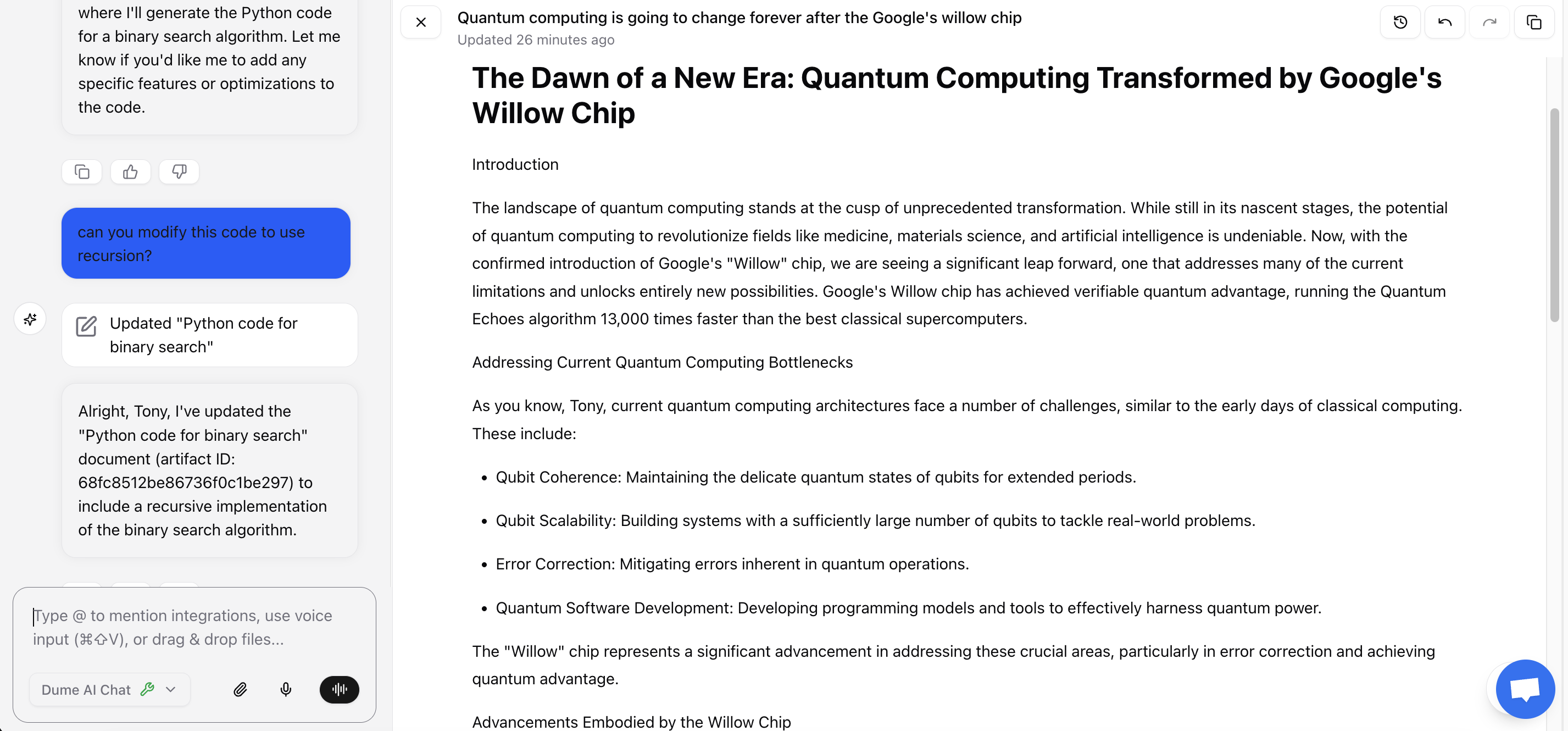

- Documentation and reports
- Blog posts and articles
- Meeting notes and summaries
- Creative writing
Available Functions
Creating Artifacts with Natural Language
Simply type@create_artifact in your chat followed by your prompt describing what you want to create. Dume.ai will automatically determine the best artifact type and generate the content for you.
No need to specify JSON parameters or function names - just use
@create_artifact followed by your natural language description.Editing Existing Artifacts
You can modify any existing artifact by referencing it and describing your changes.Edit Examples
Edit Examples
Combining Artifacts with Other Tools
One of the most powerful features of Dume.ai is the ability to combine artifacts with other tools seamlessly. Here are some common workflows:- Email + Spreadsheet
- Code + Documentation
- Data Analysis + Report
- Meeting + Action Items
The
@create_artifact command works contextually - Dume.ai understands previous conversation context and can reference data from other tools when creating artifacts.Best Practices
Pro Tips for Artifacts
- Be descriptive in your requests: “@create_artifact create a Python script for web scraping with error handling”
- Reference previous context: “@create_artifact turn this data into a professional-looking spreadsheet”
- Combine with other tools: First fetch data, then ask to “@create_artifact organize this into a document”
- Use conversational language: “@create_artifact make this code more readable” or “@create_artifact add charts to this spreadsheet”
Natural Language Best Practices
- Be specific about your needs: Instead of “create a document”, say “@create_artifact create a project proposal document with timeline and budget sections”
- Reference existing context: “@create_artifact collate the email data we just discussed into a tracking sheet”
- Ask for iterations: “@create_artifact improve this code with better error handling” or “@create_artifact make this report more visual”
- Combine artifact types: “@create_artifact create both the code and documentation for this API”
